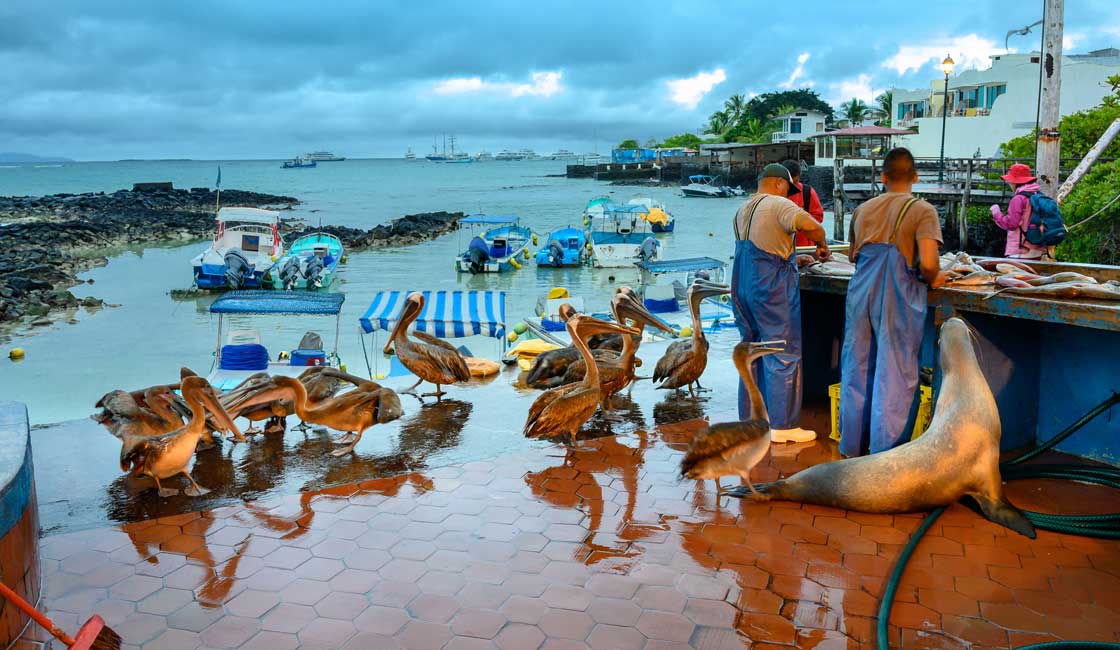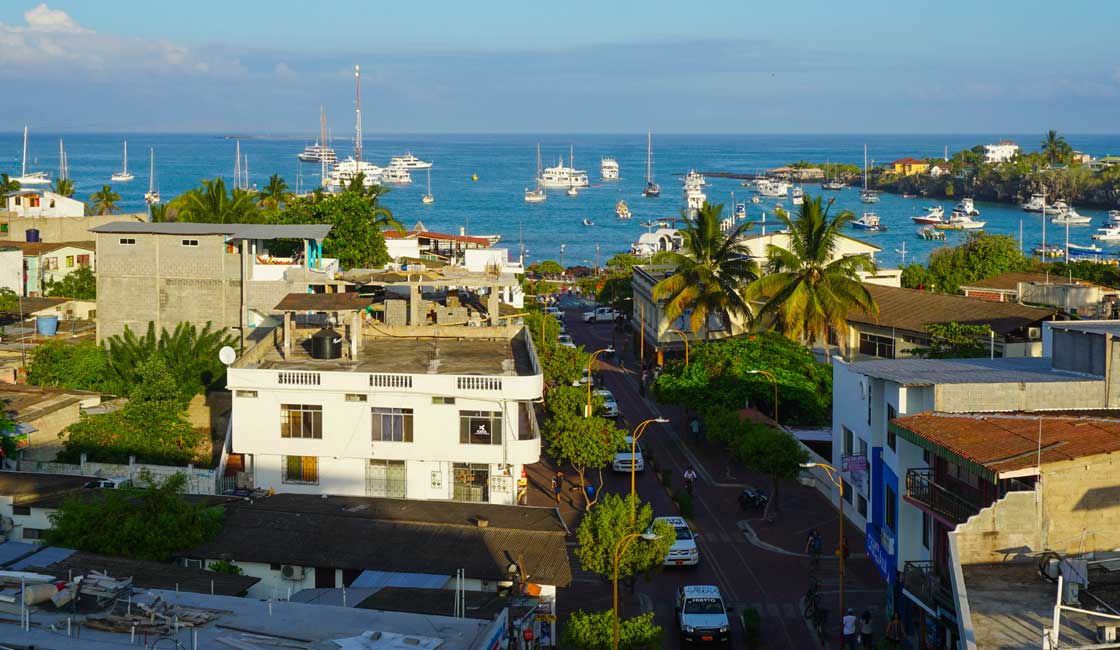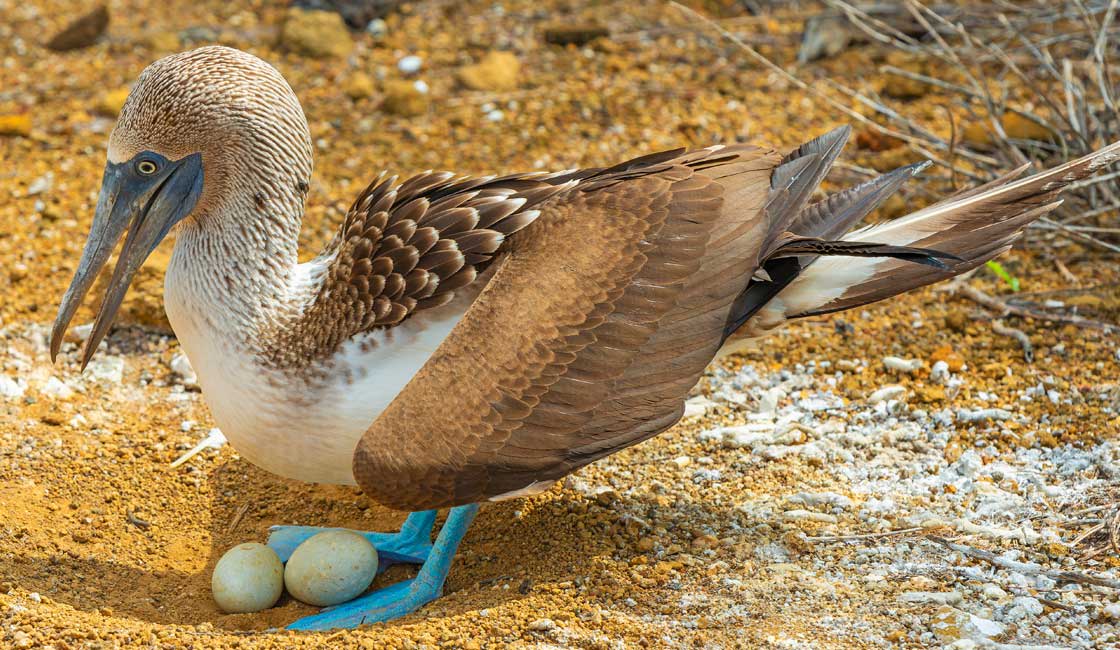
The Galapagos Islands have been protected under a national park status since 1961, but what exactly does that mean? How many creatures are still endangered on the islands and what are the threats to the wildlife and plant life populations on the Galapagos today?
Visiting the Galapagos Islands is like taking a trip to a world before humans existed. Far away from the modern mainland, the Galapagos are stuck in a time warp that is often found under threat. From the growing human population and climate change to the overuse of the islands’ limited natural resources, the Galapagos Islands are at risk. The unique plant life and wildlife that exist on the islands are mostly endemic, which means they only exist on the Galapagos Islands. If the species and plant life cannot survive there then they could be lost forever.
Since Charles Darwin’s discoveries nearly two centuries ago the islands have been at the forefront of discussions about evolution and preservation, as well as an exciting tourist location. But what are the main threats to the islands and what is being done to help? Let’s find out…

Seagulls and sea lions being clever
1. Growing Human Population
The presence of humans on the islands, both in the form of tourism and migration has caused a number of environmental issues over the years, ever since humans have lived on the islands. Large numbers of people from mainland Ecuador have flooded to the islands to find work, increasing the population of the islands by 300% in the past few decades. Humans put pressure on their natural resources and cause an excess of waste that the islands are not equipped to deal with.
2. Overfishing
Despite the Executive Decree enforced by the National Park Service in the 1990s that banned all sea cucumber fishing on the Galapagos, notably after a massive decrease in the populations of the desirable target (fished mostly for medicinal purposes), the dangerous overfishing of sea cucumbers still continues to this day. Illegal fishing and overfishing continue to happen, often as a result of the lack of jobs on the island, with tourism one of the only fields available to migrant workers. Thankfully the creation in 1998 of a 133,000 sq km Galapagos Marine Reserve to the north, east and south of the islands – and imminent expansion by 60,000 sq km as announced at the COP 26 climate summit – have helped to mitigate the threat.

Ships anchoring in Santa Cruz port
3. Tourism
The popularity of the islands is both a good and a bad thing for the islands. From receiving around 1,000 tourists a year during the sixties to accommodating 80,000 visitors in 2001 the influx of extra people to the islands has led to a second airport being built and an excess of waste that the islands are not equipped to deal with. However, by inviting and regulating tourism more and more people can learn and understand the importance of preserving the islands.
4. Climate Change
The most recent occurrence of El Niño brought severe storms and had a devastating effect on the islands and alongside the weather in general, the Galapagos Islands was hit hard. Fur seals between the ages of 1-4 were almost entirely wiped out, coastal birds lost their nests and fish had to seek out new waters to feed in.
5. Invasive Species
Believe it or not, as soon as humans arrived on the islands they also brought with them other kinds of species, invasive non-native animals that upset the fragile ecosystem of the islands. From cats and dogs to goats, most animals that were introduced to the islands seemed to be common and not dangerous but the effect was catastrophic. For example, the introduction of feral dogs that came with some of the islands’ early settlers threatened tortoise eggs, native iguana species, and penguins. While recently a new wasp species have been spotted on the islands and has been noted as being responsible for the declining number of caterpillar larvae, which are a food source for finches.

Mother and a baby
1. National Park Status
Thankfully the park service ensures that tourism is managed in the best way possible, it regulates guides, designates low-impact landing sites, charges a $100 entrance fee for foreign visitors, and sets boundaries within the park to preserve and protect the natural flora and fauna of the islands.
2. Project Pinta
Commencing in the summer of 2010, Project Pinta is an ecological restoration program that returns tortoises to Pinta Island after a 40-year-long absence. Using movement monitoring services researchers are able to analyze their behavior and put together a plan for releasing the now-extinct wild Pinta tortoise species back into their natural habitat.
3. Project Isabela
Started in 1997, Project Isabela was completed in 2006 in response to the massive destruction of native vegetation and terrain of Isabela, Pinta, and Santiago Islands by non-native goats. At the time of the project, the goat population of Isabela was estimated at 100,000. Eradicating large invasive animals from the islands was successfully achieved in 2003 when Pinta was declared goat free, in 2006 when Santiago was declared free of all large introduced mammals and today Isabela is left with just 266 goats that have been kept on the island for monitoring purposes.
4. Project Floreana
Floreana is the smallest of the four inhabited islands of the Galapagos and the first to be inhabited. The island has seen two global extinctions, the giant tortoise and a cucumber vine. The five-year program set out to enhance the natural environment with the goal of making the island self-sufficient and self-sustaining. The successful program is now complete and is set to be replicated on the other islands, with Floreana now close to becoming an ideal model for the Archipelago.
5. Infrastructure Changes
Galapagos Seymour of Baltra Airport has been evolving recently to using only renewable energy and is believed to the only one in the world to be working exclusively on wind and solar power. This is a great step in the right direction for the islands, especially after the airport won a major US award for environmentally friendly design.
Involved heavily in most of the projects above, the Charles Darwin Foundation was founded in 1959 and is a not-for-profit scientific organization. The foundation is made up over one hundred scientists, research assistants, support staff and volunteers who help to sustain and build a stable future for the islands. Visit the Charles Darwin Research Station to find out more about the foundation and everything they are doing to help conserve and protect the islands. You can also make a contribution to the foundation both online and after you have visited the Charles Darwin Research Station.
Sadly despite all of the efforts taken by conservationists, scientists and national park rangers, the risk to wildlife is still increasing. 109 endemic vertebrate species have been recorded, and 13 are now considered extinct, 57 marine species are considered critically endangered and 20 plant species are critically endangered. As projects and plans start to take shape, however, these numbers should improve and leave fewer creatures at risk.

The booby with her eggs
The Galapagos are a leading example of sustainable tourism in action. By visiting the islands you will be helping with the Galapagos Islands’ preservation as your entry fee to the national park will go directly towards the conservation projects mentioned above. Almost every traveler who visits the islands leaves with a new found awareness of conservation issues, appreciation for the natural world and the importance of protecting these incredible islands for future generations and the good of the planet.
When you visit the islands be aware of the fragile nature ecosystem you are stepping on, and make sure you always abide by the following rules:
You may also like to consider donating directly to the Charles Darwin Foundation (you can make a donation in person when you visit the Charles Darwin Research Station in Puerto Ayora if you like) or to one of the registered Galapagos-specific conservation charities such as the Galapagos Conservancy in the US or Galapagos Conservation Trust in the UK.
While Rainforest Cruises aim to provide accurate and up-to-date information, we make no representations as to the accuracy or completeness of any information herein or found by following any link on this site. Rainforest Cruises cannot and will not accept responsibility for any omissions or inaccuracies, or for any consequences arising therefrom, including any losses, injuries, or damages resulting from the display or use of this information.




